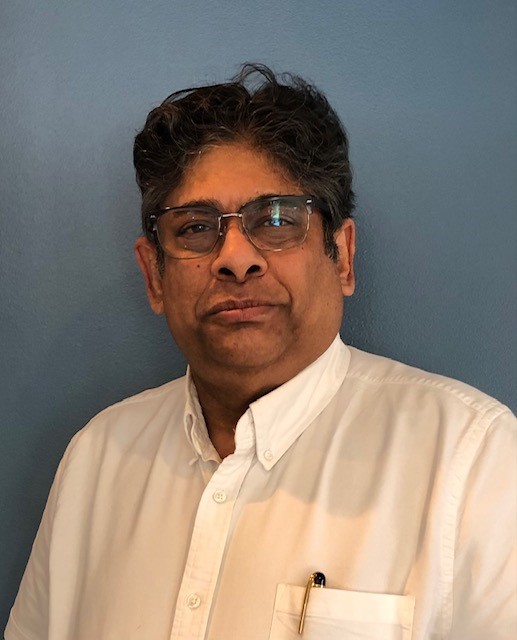|
|
Extractable and Leachables Testing: Where to Start?
Extractable and Leachable testing for pharmaceutical products has continued to evolve over the last several years. The evolution of E&L programs and onset of more testing providers providing various approaches to testing has left many drug developers with questions around the E&L process, regulations and required testing.
This presentation will provide an overview of what Extractable and Leachables are, along with related regulations and guidelines and required testing. We will also discuss how the formulation and route of administration play into the required tests and identify specific products that pose challenges for E&L Testing and how to resolve them.
|
 Kevin Wells Kevin Wells
Eurofins BioPharma Product Testing Columbia
As a group leader at Eurofins BioPharma Product Testing-Columbia, Mr. Wells is a subject-matter expert in extractable and leachable programs, along with elemental impurity analysis. With more than 16 years of experience, Mr. Wells has led a variety of extractable and leachable programs for numerous drug product formulations and container closure systems and has been involved in the successful development and validation of hundreds of leachable methods used in various drug product submissions
|
|
|
Case study: Addressing Headspace Migration of Leachable into Drug Product
The appearance of benzophenone in a batch of R&D MDIs initiated a search for the source. Benzophenone was identified as a component in the varnish used on the labels of the MDI canister. In order to elucidate the mechanism of transfer into the formulation, several experiments were undertaken, including incubating an open vial containing benzophenone upright in an overwrap containing an MDI. Increased time and temperature lead to increasing levels of benzophenone in the MDI. The mechanism was taken to be vapor-phase transmission followed by diffusion through the gasket material into the formulation. This discovery has led to greater scrutiny around secondary packaging components used with MDIs. Emphasis is given early on during material screening/selection to assesses for potential migrant species that could impact patient safety and/or product quality.
|
 Stephen Warren Stephen Warren
AstraZeneca
Stephen manages the internal and external E&L activities within the AstraZeneca (AZ) Inhaled Product Development unit. After graduating the University of North Carolina at Chapel Hill he began his career in pharmaceutical development and has over 18 years of industry experience with a focus on inhalation technology and testing. In his current role at IPD-US, he runs the global leachables stability programs, manages leachables method development/validation, conducts extractables characterizations, authors Reg-CMC submission documents and provides on market support for product changes. As an E&L subject matter expert in OINDPs, he is part of AZ’s E&L Global Network and represents AZ as a member of ELSIE and the IPAC-RS Materials Working Group where he works to advance understanding of the impact of E&L on product quality and process performance.
|
|
|
Establishing Permitted Daily Exposure (PDE) Values for Extractables & Leachables into Drug Products
A Permitted Daily Exposure (PDE) is defined in guidance by the European Medicines Agency (EMA) and the International Conference on Harmonisation (ICH), as a health-based limit and represents a dose (either oral, IV, or otherwise specified) that is unlikely to cause an adverse effect if an individual is exposed, by that route, at or below this dose every day for a lifetime. PDEs are used to define acceptable levels of residual solvents in drug products [in ICH Q3(C)], elemental impurities including metals [in ICH Q3(D)], and the EMA guideline for protecting drug products from cross-contamination (residual carry-over of active pharmaceutical ingredients in multi-purpose plants). As specific guidance for determining acceptable amounts of leachables into drug products has not been defined, a robust scientific approach is needed. Therefore, the use of PDEs using health-based risk assessment approaches has been applied and is acceptable to submit to regulatory agencies as part of the “toxicological evaluation” of leachables into drug product. The basis of the PDE determination, when in the extractable and leachable process to develop PDEs, what to do with drugs given on a less than daily basis and why significant scientific judgment and experience to derive these values will be discussed. An example of how to derive a PDE will be provided to demonstrate utility in its application to leachables (and extractables).
|
 Allan W. Ader, Ph.D., DABT Allan W. Ader, Ph.D., DABT
SafeBridge Consultants, Inc.
Allan Ader, Ph.D, DABT is co-founder and co-Managing Director of SafeBridge Consultants, Inc., now doing business as the SafeBridge Regulatory & Life Sciences Group, the premier resource for high level risk assessment, safety, health and environmental support to the biotechnology and pharmaceutical industry. Dr. Ader has extensive experience in:
- Performing health-based risk assessments including Permitted Daily Exposures (PDES) including evaluating toxicological and exposure information to determine potential health effects of chemicals,
- Developing Occupational Exposure Limits and assessing compounds for toxicity and potency for compound categorization / banding and recommending handling practices and controls based on the toxicity/potency characteristics,
- Assisting companies in testing of chemicals for their toxic effects and interpreting data from these tests, and
- Responding to crises caused by occupational health illnesses from chemicals by assessing and evaluating risks and communicating them to employees and management.
Dr. Ader has over 30 years of experience in the pharmaceutical and chemical industry including working for Syntex, Inc. in Palo Alto, CA and Olin Corporation, New Haven, CT. He received a Ph.D. in Industrial Health (Toxicology) from the University of Michigan and an M.S. in Industrial Hygiene from Temple University. He is a Diplomate of the American Board of Toxicology.
|
|
|
The Making of a LEAN E&L Laboratory
Get a virtual tour of Eurofins’ new, state-of-the-art laboratory dedicated to Extractables & Leachables Testing. Learn how this new lab was designed and built with LEAN efficiency elements to enhance sample processing, speed of testing, reduce errors, and mitigate contamination. This presentation will provide an overview of the LEAN lab design and efficiencies as well as the instrumentation utilized.
|
 Andrew Blakinger Andrew Blakinger
Eurofins BioPharma Product Testing
Andrew Blakinger leads the Extractables & Leachables Testing team for Eurofins BioPharma Product Testing and Eurofins Medical Device Testing. He has over 9 years of experience planning, managing, and conducting E&L studies for container closure systems, manufacturing equipment, and medical devices. Additionally, he previously oversaw compendial container testing per USP, EP, and JP. He is experienced in ICP-OES testing as well as analysis by LC/MS. Andrew earned a B.A. in Chemistry from Clemson University.
|
|
|
Combating Nitrosamines in Packaging and Container Closure Systems
Nitrosamines in all drug substance (API) and drug product (DP) has come under scrutiny in the past two years. All on-market and development APIs and DPs have to be assessed for nitrosamine risk. The APIs and DPs that are identified for possible nitrosamine risk from a combination of API synthesis and formulation have to be tested. It is a major undertaking by all pharmaceutical companies and it also involves their preferred CROs. The risk of nitrosamines from drug product packaging and container closure systems has also received the attention of regulatory authorities. This presentation will discuss the historical context for sources and analysis of nitrosamines in Packaging (blister packs) and Container Closure Systems (inhalation products and parenteral). A case study on nitrosamine assessment in blister packaging for tablets will be presented.
|
 Atish Sen, Ph.D. Atish Sen, Ph.D.
AstraZeneca
Currently a Staff Scientist with AstraZeneca in Research Triangle Park (RTP) working on trace analysis, extractables and leachables (E&L), Dr. Sen has been in the field since 2001. He began his E&L career extracting and analyzing flavor compounds from soy protein. In 2005, he began to work with pMDI container closure systems. Currently he leads the E&L and trace analysis activities at RTP and supports other R&D groups within AstraZeneca. Testing for nitrosamines in drug product and packaging is at present a major area of focus. A member of the Materials Working Group within ELSIE and Knowledge Base sub-team Dr. Sen has been supporting the development of an extractables knowledge base. A member of the IPAC-RS Materials working group and involved on recommendations for nitrosamine testing on container closure systems. He is also a member of the PQRI Development Technical Committee. Dr. Sen earned a Ph.D. in Physics from the University of Wyoming.
|
|
|
Looking Past COVID Toward New Horizons: Challenges with Ultrarapid Development, Manufacturing and Deployment of Pharmaceutical Countermeasures for Unanticipated and Unmet Medical Needs
Living with COVID has emphasized the fact that catastrophic biological threats exist which can place populations at considerable risk. These may represent either deliberate or unintentional (e.g., natural disaster, pandemic, etc.) events and necessitate rapid assessment and review processes to deploy life-saving countermeasures with an acceptable and appropriately scaled benefit/risk ratio. Agencies such as the US FDA have developed cross-functional programs with pharma and non-pharma collaborators (e.g., DoD, DOE, EPA) and guidance (e.g., Emergency Use Authorization) to expedite development and deployment of drugs to treat life-threatening diseases and unanticipated, unmet medical needs. However, the implementation of such efforts is not without significant technical challenges, including development of technologies for threat identification, effective risk assessment processes for rapid development, storage, and delivery of drug product countermeasures, and ensuring supply chain integrity. These processes require unprecedented agility and necessarily rely upon SUS and platform technologies (e.g., digital, rapid, reconfigurable manufacturing for small and moderate targeted therapeutic population needs). Benefits and some technical and regulatory challenges with implementing accelerated development and deployment of countermeasures will be explored, and as well as the future direction of this rapidly evolving area.
|

Douglas Kiehl
Eli Lilly
Douglas Kiehl is a Research Advisor at Eli Lilly and Company and leads the Advanced Structural Characterization, Trace Analysis, Extractables/Leachables and Elemental Impurities team. Mr. Kiehl has over 38 years' experience with application of advanced mass spectrometry in characterization of diverse chemical entities, 26 years of which are in the Pharmaceutical Industry. He is a member of the USP Packaging and Distribution Expert Committee, Chair for the PQRI (Product Quality Research Institute) Development Technical Committee, PhRMA Topic Lead for the ICH Q3E Expert Working Group, the USP Expert Panel on Biocompatibility of Materials Used in Packaging Systems, Medical Devices and Implants, the USP Expert Panel on Elastomeric Closure for Injections, Board of Directors for the ELSIE (Extractables/Leachables Safety Information Exchange) Consortium, Chair for the SPIE Defense and Commercial Sensing Conference and member of the AAPS Impurities Steering Committee. His research interests include the development of advanced mass spectrometry-based mapping and visualization techniques to enable the rapid and comprehensive characterization of highly complex mixtures of structurally and compositionally diverse chemical entities. He also leads multidisciplinary efforts to advance ultrarapid threat detection and development, manufacture and deployment of pharmaceutical countermeasures for catastrophic (e.g. pandemic, environmental disaster, etc.) unanticipated medical needs and point-of-use patient therapies.
|
|